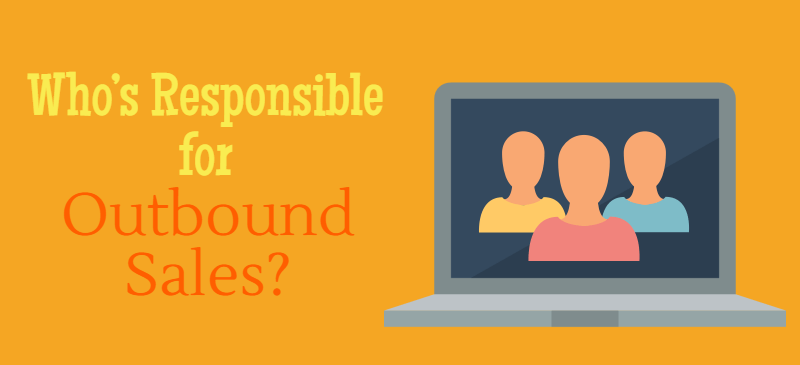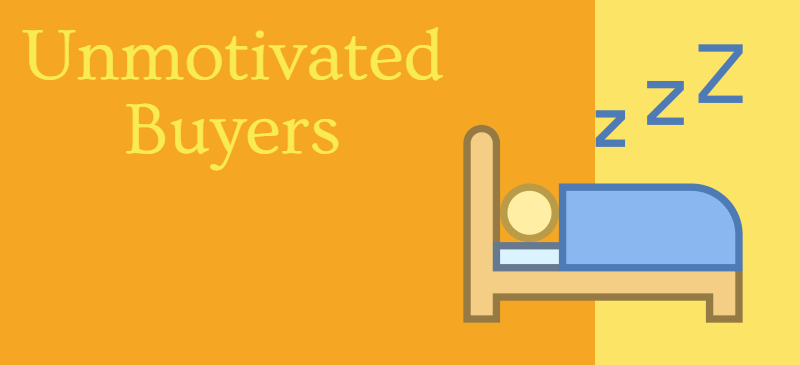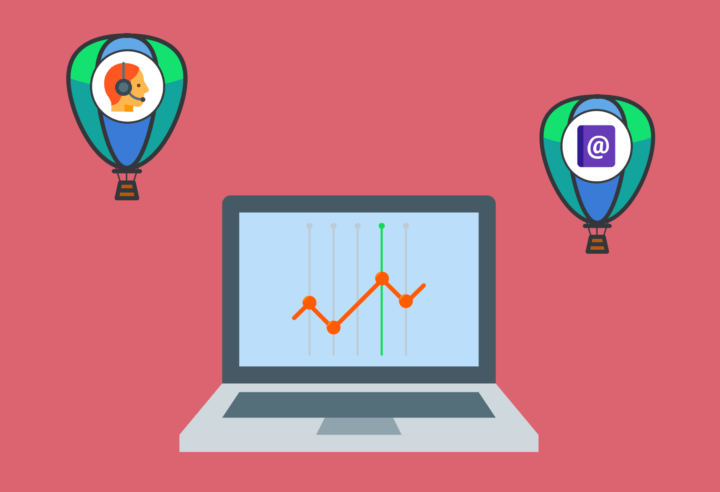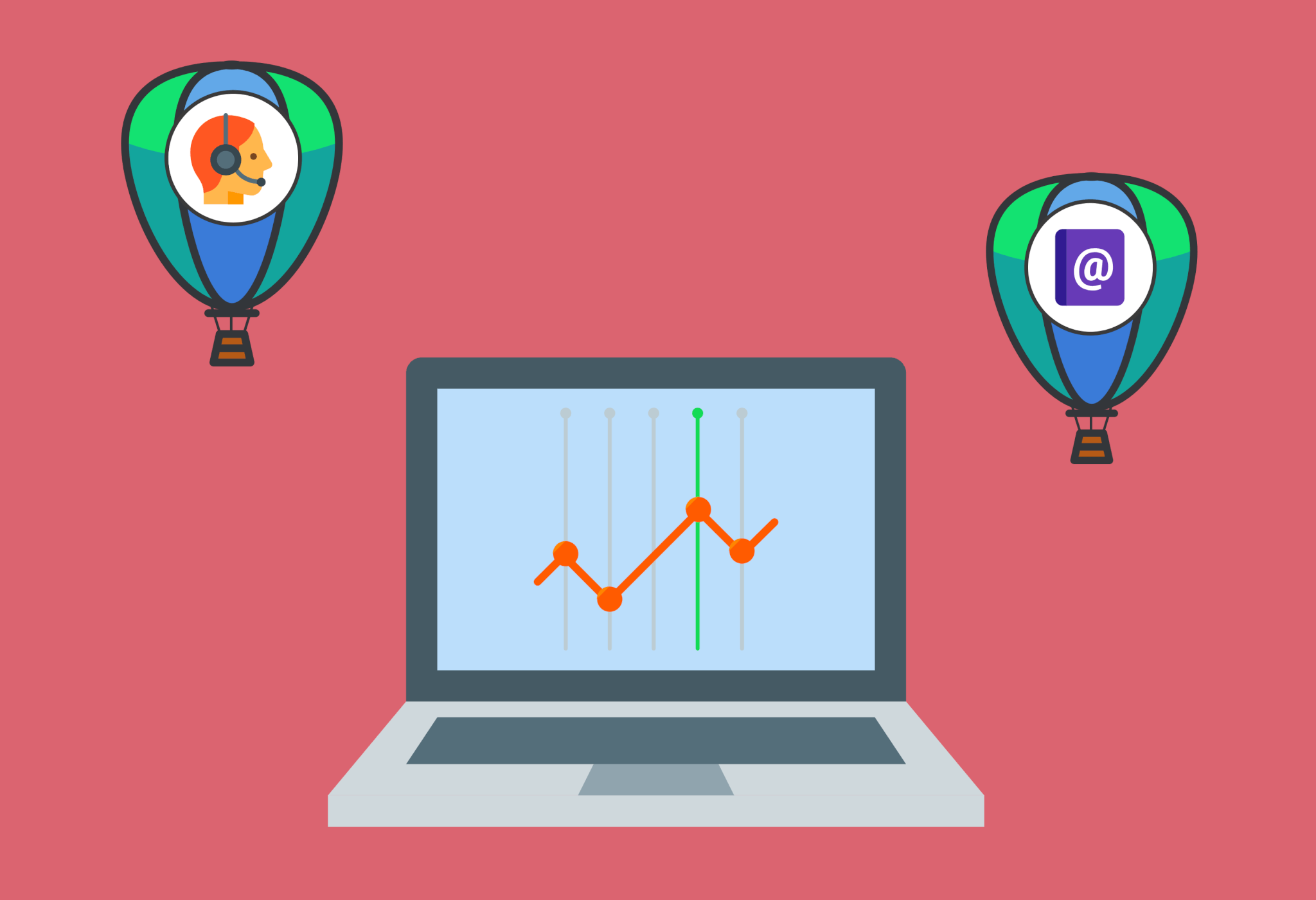What is Outbound Sales?
Outbound sales is a process through which sales reps find, contact, and engage potential customers using cold calling and other outreach methods for the purpose of generating interest in and selling their company’s products/services.
Outbound selling is the traditional method of selling where, instead of waiting for prospects to show interest in your product or service, you go into the market to check for people who may have that interest or need.
Companies that practice outbound selling will typically acquire lead lists from a lead-generating software like LeadFuze but they may conduct their own research to find leads.
Inbound sales vs outbound sales
Inbound sales is the opposite of outbound sales. Working off our outbound sales definition, inbound sales is the sales process where you focus your efforts on attracting people who have a genuine interest or need for what you are selling.
The goal of inbound selling is so you can invest your energies in warm leads that are more likely to become paying customers. You use content marketing and other digital marketing techniques to gauge interest and qualify leads’ readiness to purchase.
There has been a ton of hubbub around the subject of inbound sales over the past half-decade or so. Especially since the creation of a little company called HubSpot. In 2004, a bunch of MIT folks started talking about how to attract the right people to a brand using inbound techniques and BOOM!
But this post is about outbound sales.
You see, all the talk about inbound methods has made some think that finding a good quality lead and trying to get a hold of them via cold email and cold calling isn’t effective anymore. We hope to dispel that half-myth today.
We can go on and on, back and forth on the subject of cold outreach. Is it dead? Is it dying? Or, is it still a legitimate tactic?
Some are adamantly against cold email/calls while others still use them daily. There are many success stories on both sides of the inbound sales vs outbound sales debate, which means we will be talking about it for some time to come.
Now that you can confidently define outbound sales, do you think this sales strategy is a fit for your business? Should you add or keep outbound selling as a part of your overall sales strategy?
Why Outbound Sales are Important
Outbound sales are important because when you’re cold-calling or going door to door, you can find potential clients for your business that may not know about the services and products they need.
Outbound sales is an aggressive, front-foot strategy that every business will find itself using at some point in its lifetime. Rather than waiting around for people to come into your store, you go out and reach out to them. Some new customers may never find you if you don’t look for them.
We’ve just scratched the surface. The outbound sales process we have described above has a lot of moving parts that we’ll also have to define, starting with your sources of leads:
How Do You Get Sales Leads?

Leads are generated in a number of ways.
This is typically where the misconceptions start coming out (but we’ll get to those further down). Finding leads to reach out to come in three basic ways.
1 Buy a List
This is the least effective method to get leads. Purchasing a list of names that meet basic criteria often leads to the lowest response rate (from cold outreach) and a pretty abysmal conversion rate. Unfortunately, many believe this is the only way to do “cold calling”.
2 Researching contacts
This process involves the salesperson developing a list of potential buyers based on intel, ideal customers currently using the products/services, and research skills to find contact information before reaching out. A very effective and profitable outbound method.
3 Leads contacting company
There are times when a lead will reach out to a company first. Through a contact form, by phone, email, referrals, or possibly advertising. These leads should be contacted as soon as possible by those who are responsible for qualifying and setting appointments.
Inbound Leads: Generally acquired through content marketing, SEO, and advertising. These leads aren’t typically part of the outbound process and will typically be handled differently and perhaps by a different role on the sales team entirely.
Who Is Responsible for Outbound Sales?

During the initial stages of your business, the founder or CEO will likely take on the prominent sales role. After all, you know the company best and how badly need you need the revenue.
Shameless plug: Using a lead gen software will help, especially if you’re trying to construct a list of quality prospects for your cold outreach efforts. This one can even send your cold emails for you (while helping you optimize for maximum response rates).
The primary sales role that will be handling outbound lead acquisition will be a development rep.
Some companies call this role a sales development rep (SDR) and others (like us) call it a business development rep (BDR).
We like to differentiate SDRs as those primarily responsible for setting appointments from inbound leads while BDRs are responsible for breaking new ground and finding high-quality cold leads.
Bonus Resource: For a detailed look at what a BDR does and some of the best practices for researching leads, check out our post here.
The 5 Steps of the Outbound Sales Process
The outbound sales process has steps that you have to follow in order to achieve the sales targets you have set for yourself. Let’s take a look at those steps:
Step #1: Identify your target audience
A big part of outbound sales is knowing who you’re talking to and what they want or need, so the first step in this process is figuring that out.
For example, if you make coffee tables then it would be good to know how many people live in their own home with a living room that could accommodate a coffee table.
Step #2: Research your target audience and find their contact info
This is where the online tools come in handy because they give you more information to work with. But make sure not to rely too much on these resources since they’re less personal than an actual phone call or in-person visit.
Do you have a hard time finding the right person to talk to at your company?
LeadFuze is an AI-powered lead generation platform that helps sales teams find and reach out to their target audience. We use machine learning to analyze data from over 100 million companies, so we can find the perfect contact for any business.
With LeadFuze, you’ll never be stuck again wondering who has the information you need or how best to get in touch with someone. You’ll always know exactly who’s on your team and what they do. And when it comes time for a call, our intelligent dialer will automatically connect you with them – no more searching through endless phone trees!
Sign up for a free trial of LeadFuze today!
Step #3: Talk to your target audience
The message you want to convey is that there’s a problem and the lead needs help solving it. But be careful not to come across as too desperate or needy because this can turn them off from what you’re selling.
You also don’t want the conversation to end with an unanswered question about why they need help.
Step #4: Close the sale and collect their info for follow-up
You want to close this as quickly as possible because if you drag on too long, the person might start getting annoyed or lose interest in what you’re saying. That is not a good sign for your sales call!
Reach out with a personalized email that includes an offer they can’t refuse, and a call-to-action to get the conversation started.
Step #5: Reach out with follow-up emails or calls
There is a chance that the lead will not respond the first time you pitch your product. That’s not a queue to give up on them. You should follow up.
That said, you don’t want to come off as pushy. If there’s no response in 24 hours, try again at a later date.
If you want to be more successful in your outbound sales, it’s important that you come off as helpful and truly focused on the prospect’s need, not the sale.
When you call, ask them how their day is going, where they work, or anything else that’s not about what you are selling so that the conversation doesn’t end abruptly. In short, build a relationship that ends in a sale.
Tackling the Straw Man – (Dealing With Misconceptions About Outbound Sales)

Some really good arguments against some elements of cold outreach exist. Seriously.
That said, the one’s worth reading will typically give credit to the many benefits of the method overall. In fact, many inbounders will go as far as to say that inbound and outbound sales techniques should be used to achieve growth.
Articles and posts that aren’t worth your time are straw man arguments.
You know, the type of thing that puts up common (but totally wrong) misconceptions that can really rally a crowd and make the thing being discredited seem really bad and often makes the presenter of the argument look really good?
No, we’re not saying people are intentionally leading people away from outbound. Most have excellent intentions, but let’s look at a common definition of the term in question.
Less Accurate Definition: Outbound sales is the process of sales reps making outbound sales calls to prospects. Outbound sales sometimes involve making cold calls to leads on a list, though often reps call leads that have previously demonstrated demand for a product by engaging with a brand’s content, filling out a form, emailing a business, or making a previous call to a business. (Emphasis ours.)
No mention of developing a list, using great data to ensure quality prospects, or even cold emailing (a vital part of outreach nowadays).
We love outbound, but this definition doesn’t make us feel like cold calling.
The way the word “list” is used makes you feel like it’s one purchased from a third party. And the term “sometimes” isn’t really an accurate representation.
- Outbound reps are either researching new leads, contacting fresh leads, or nurturing contacted leads—all the time.
- Buying a list isn’t terrible, but generating your own leads will lead to a much higher conversion rate.
There are a couple of other reasons outbound isn’t dead.
New Markets

When you are venturing into new territory and don’t know if it’s worth having a full-on inbound marketing campaign; why not try a few outbound sales techniques?
Having BDRs reach out to similar companies in other markets could shed light on how successful your products may be in that sector.
Not to mention that you can gain ground in the said sector while you are trying to rank for those key terms via SEO and develop that awesome content for your new inbound funnel.
Unmotivated Buyers

No matter how many leads come to you, there will always be new customers waiting for you to call them.
They may have been to your site, clicked on your ad, and liked an Instagram post—but won’t buy until you reach out. It happens all the time.
All a new client needs is the invitation to hear more about your stuff.
Sometimes it’s due to a disorganized organization. No one knows who’s buying what. Or, other times, it’s misconceptions about the differences between your solution and the one they currently use (“aren’t they all the same”).
Whatever it is, there always has to be someone going to “them”. Or else you’re losing potential revenue.
Now that we’ve built a definition for outbound sales, removed a few misconceptions, and made an argument for the process—it’s time to share a couple of techniques you should try.
3 Outbound Sales Techniques To Reinvigorate Sales Strategy
Same as inbound sales, there are different outbound techniques available for you to use. If one is not a fit for your product or market, you can try others.
Now, here are the 3 most common outbound sales techniques:
- Cold calling
Cold calling is when you pull your lead lists and start calling them one by one asking if they have a need for what you are selling. You ask because they have not contacted you to express any interest in your product or service.
Cold calling is exhausting, draining work for the salesperson. The leads aren’t sitting by the phone waiting for your call. In fact, people actively avoid cold calls, which many consider disruptive and annoying.
But even though the rejection rate is high with cold calling and it is a numbers game, there is no denying that when it works, it works. To lower that rejection rate, work on the quality of those leads.
-
Cold emailing
Cold emailing is the same as cold calling with the only difference being that you are contacting leads using email and not a phone call. The lead does not have an existing relationship with you, nor have they shown you that they could buy what you are selling.
-
Social selling
Social selling is a newer, hip outbound sales technique where you use social media to find, contact, and engage leads. It involves researching topics that are a fit for your products and chiming into the conversations with helpful comments.
If the opportunity presents itself to plug your product as a solution, you do so but in a calculated way that doesn’t come off as salesy. But the safer approach would be to use these conversations to establish how much awareness and demand there is for the solution your product offers and then nurture that interest until you can pitch it.
Next, let’s discuss best practices as without those you may not get the best out of the techniques we just shared:
Outbound Sales Best Practices
“Sales is not about selling anymore but building trust and educating.” — Siva Devaki
Again, we think building a quality list is crucial to the success of an outbound sales process. We’ve already talked about that at length in this and other posts. Here are the 5 ways to sharpen your outbound sales skills.
1 Research more than just stats

Using data is awesome.
Growth marketing, buyer personas, and business forecasting are places where data is king. Outbound sales, though, is a bit different. You’re reaching out to real people that make up those facts.
Often times having a bit of a connection with a lead will entice a greater response rate. The cool thing is that those generating new leads don’t have as many. Fewer, but better quality, leads may give you the time to do further research (e.g. looking at LinkedIn profiles).
Find something that you can mention in your email and make a personal connection. It works.
2 Build credibility

Don’t just walk into a new market like you own the place. Get your footing, follow people of influence in that industry—know what you’re talking about.
Understanding your world is less than half the equation.
You have to understand the prospect’s concerns, responsibilities, and pains (in relation to your products).
Pro Tip: Acronyms are a big part of every industry. Getting acquainted with these is like gold. It’s like you speak their language and they’ll open up to you more seeing as how you “get it”.
2 Offer incredible value

Inbound is all about offering value to visitors. A great lead magnet is an effective way to get leads into and move them through your funnel.
Outbound can do this too.
Example: You sell an app that helps video game developing firms collaborate. How about offering a one-on-one to help them implement strategies that lower development time (with or without your product)?
3 Ask for referrals
Your existing customers are one of your biggest assets that you can use to grow your sales. Ask them to refer people they know who may have similar needs to theirs.
If the customer has had a particularly pleasant experience dealing with your company and achieved great results from using your product, they can do the bulk of the work for you. That is because buyers trust the opinions of other buyers over that of the product’s vendor.
4 Use outbound sales scripts
You will have greater success with cold outreach when your sales reps are working off of scripts that you have actually tested and found to work. While it’s not a bad idea for SDRs to sometimes work off-script, a script ensures they don’t miss important elements of the pitch and stay on-brand.
A great script will have all the information leads may need to know about your product, how the product solves the prospect’s needs, as well as answers to questions commonly asked about your product and the pain point it solves.
Should You Use Outbound Sales?
Outbound sales are a great way to generate leads for your business because they allow you to reach out to people who might not have come across one of your ads.
This sales strategy is best used with leads that have expressed interest in similar products and services from other companies. So it’s like finding new prospects that want what you have.
Outbound sales can also be used to generate leads for the company if you are trying to position yourself in a different market or niche. You can use them to validate a market before investing in inbound sales tactics that require more investment in time and money.
Whether you add outbound sales techniques to your sales machinery depends on your product or service, market, and resources. Most times, though, a hybrid strategy where you use both inbound and outbound tactics is the most effective.
Time to Put your Outbound Sales Skills to Use
It’s never a bad idea to try new strategies to grow your sales. If you’ve always used inbound tactics to generate sales, it’s not the worst idea to incorporate a few outbound sales techniques.
Outbound sales methods are a great way to expand your lead sources. Lean into what has worked for other companies in your niche, but don’t be afraid to mix things up with what is working in other industries.
If you have been using outbound sales tactics, you already have the skills. You may just need to freshen them up with the outbound sales techniques we have shared. Now get your leads list out, get on the phone, fire up your email, go knock on doors and get new customers in.
Want to help contribute to future articles? Have data-backed and tactical advice to share? I’d love to hear from you!
We have over 60,000 monthly readers that would love to see it! Contact us and let's discuss your ideas!

